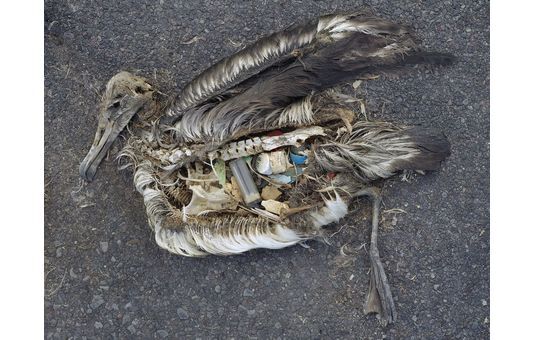Plastic is all around us. Restrict its use?

Plastic is literally in our hands at all times of the day. Our keyboard, mouse, steering wheel, smartphone case, toothbrush. It follows us everywhere, in every activity.
Have you taken the time to think about where all this plastic ends up when we don’t need it any longer? A certain quantity of plastic is recycled, some other ends up in landfills and much more of it than we can imagine ends up polluting the environment and, principally, the sea. Plastic waste, because of ocean currents has overwhelmed the Earth’s oceans.
Did you know that...?
- In the past decade, we have produced more plastic than during the entire duration of the last century
- 50% of the plastic that we handle, we use only once and then throw it away
- The quantity of plastic we throw away in the garbage every year is enough to cover 4 times the Earth’s land size
- Approximately 500 billion plastic bags are used globally every year. More than one million plastic bags are used every minute.
- Plastic objects that are thrown at sea, are disintegrating into very small particles, so that the particles of a one-liter plastic bottle can “travel” around all of the world’s beaches
- Almost every piece of plastic that has ever been produced continues to exist in some form or other
- 46% of the plastic is found floating in the oceans and continues to float for years before finally ending up at the bottom of the sea. Also, 90% of the waste floating in the sea is made of plastic, with 46,000 pieces of plastic floating across every square mile
- One million seafowl and 100,000 sea mammals die each year from plastic waste. Pieces of plastic have been found in the stomachs of 80% of seafowl in a study conducted in 2010 with estimates of it reaching 99% until 2050. Seafowl swallow small pieces of plastic because they think it is food and, often, these pieces clog their digestive tract causing asphyxiation or they remain in their stomachs creating a false sense of fullness, thus condemning them to death by starvation. It is worth noting that up to 200 pieces of plastic have been found in the stomach of a seabird. Apart from fowl, plastic also poses a threat for sea mammals, which end up dying in a similar way.


Is it possible to stop using plastic?
We all can contribute to the reduction of the use of plastic and the mitigation of the imprint of plastic on the sea.
How?

- Avoid using disposable plastic objects (e.g. plastic cutlery, straws, bags) and use reusable objects e.g. tupperware for foods instead of plastic bags or thermos instead of disposable plastic containers for our beverages.
2. Reuse plastic by transforming a product into something else e.g. a plastic food container can be used as storage space.
3. Prefer products that are packaged in paper or glass instead of plastic (e.g. detergents).
4. Avoid using packaged products and try to use our own containers when buying bulk products (e.g. dry fruits, cereals).
5. Replace plastic with other raw materials for objects that we use. For example, use cloth-made bags for shopping instead of nylon bags.
6. Store foods by placing a plate over them instead of wrapping them up in a plastic foil.
7. Compost our organic waste so that we need less plastic garbage bags.
8. When shopping for products, select companies that invest in the protection of the environment and have proved to understand the concept of recycling.
9. Recycle all electric and electronic waste and plastic in general.
10. Participate in voluntary work for the cleaning of beaches.
11. Discuss with family and friends about the importance of recycling plastic for the environment and our lives.
Rainbow Waters and plastic management
Rainbow Waters has focused on the thoughtful management of the bottled water packaging, so as to provide the highest quality with water bottles that are safe for the health and at the same time eco-friendly.
The water bottles it produces are reusable. Thus, with the co-operation of our customers, it helps reduce waste, save energy and natural resources, as well as maintain a low cost on the product.
Returnable 18.9lt bottles are cleaned, sterilised and refilled. At the end of their lifecycle they are recycled. Recycled plastic is used in the manufacture of toys, tools and other products.
Read more about Rainbow Waters's Corporate Social Responsibility with respect to the environment…
Sources:
coastalcare.org
ecowatch.com
thegreendivas.com
www3.imperial.ac.uk
europarl.gr


